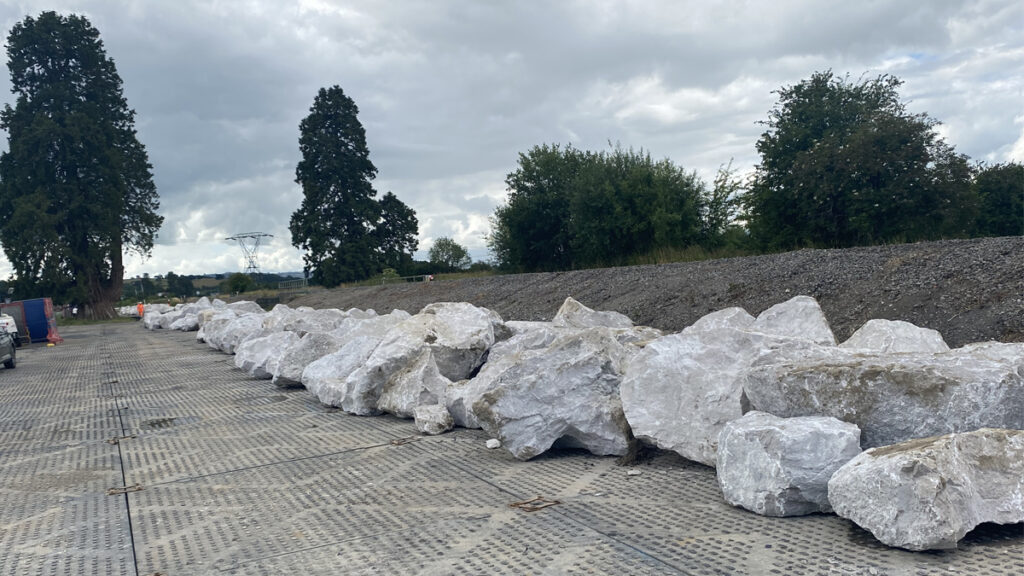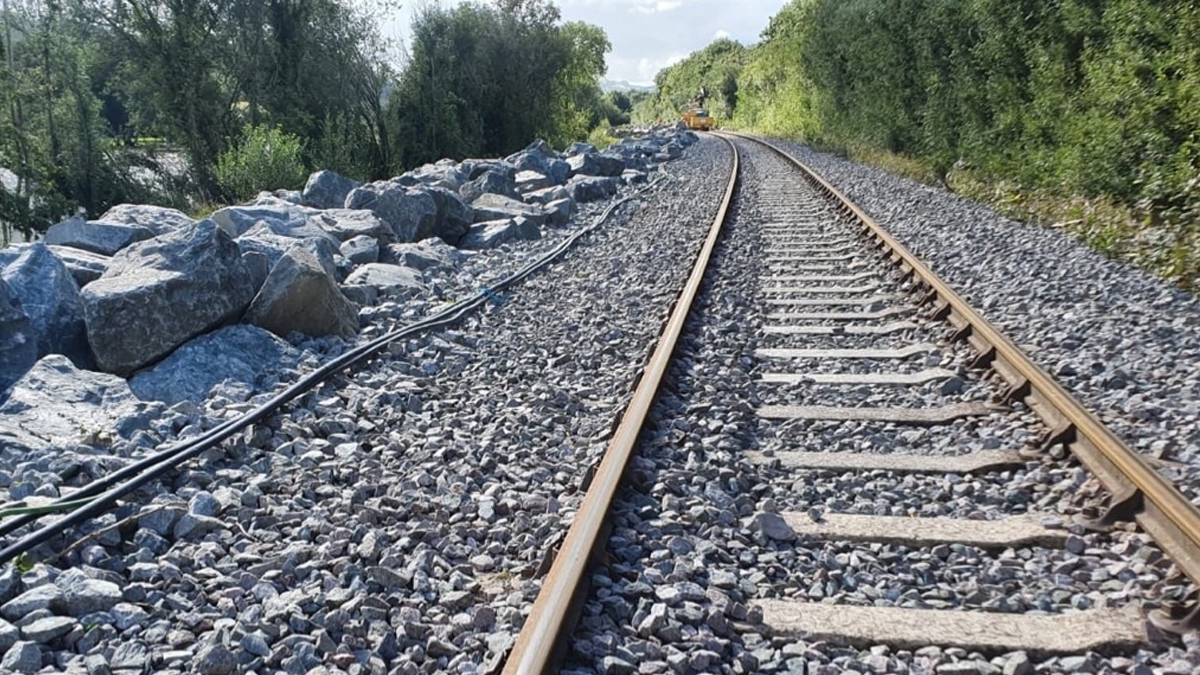We’ve worked hard throughout the years building up the resilience of Conwy Valley Line in North Wales – to make sure we can get you moving safely again after severe weather.
The Conwy Valley Line is one of Britain’s most scenic railways – but its location near the Conwy Estuary makes it particularly susceptible to flooding.
This line sits on a floodplain so the tide from the estuary can cause problems in bouts of severe weather.
The railway cuts through the floodplain or land near the estuary and the water is often dammed behind the railway embankment. But water can pour over the line and flood it during high tides, like our teams saw in April.
Resilience work
Alex Hinshelwood, programme manager, Strategy and Planning for Wales and Borders, stressed that “resilience is not about being resistant”.
Alex said: “We have repaired the worst-hit areas of the line and made them resilient by installing rock armour to prevent washout but not prevent the overtopping of the railway.”
In fact, we extensively repaired the worst-hit areas of the line between 2019 and 2020 and invested £2.2m to make the line more resilient.
Engineers installed 16,000 tonnes of rock armour alongside almost 2km of railway between Tal-y-cafn and Llanrwst. The rock armour acts as an extreme weather-buffer by preventing the ballast – the bed of stones beneath the sleepers – from washing away during extreme storms and flooding.
Alex called it “innovative and the first of its kind for dealing with washout protection.”
He said: “It has since been used at two other locations in Wales and Borders to great effect.”

A faster recovery after extreme weather
These resilience measures also mean it can take days, rather than weeks or months, to repair the railway after a harsh storm or flooding. It also means you can depend on a more reliable service and avoid lengthy closures.
This was true this month when we closed the line on Tuesday 9 April due to flooding on parts of the line near Dolgarrog station. It took us just four days to repair and reopen the line. Without the rock armour, the repair may have taken four months.
Future proofing the line
This sort of flooding will occur more often because of climate change – and in the spring when high tide is more frequent.
But our resilience work means these events don’t affect the railway and your trains as badly as they may do otherwise. And our robust process means we can quickly repair and reopen the route to your services.




